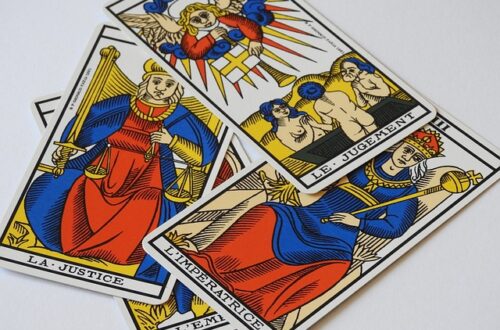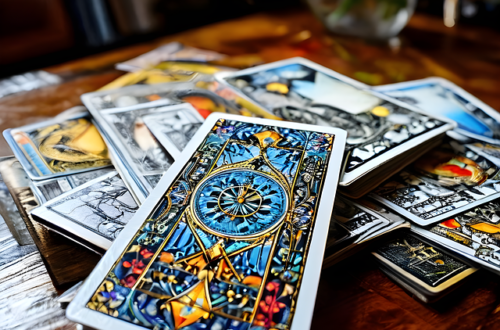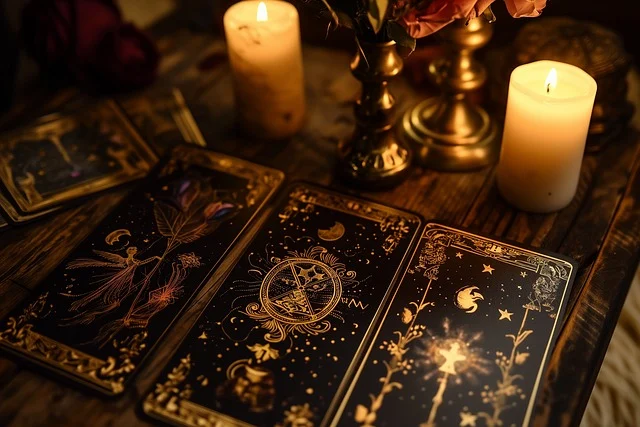
Understanding the Major and Minor Arcana in Tarot
Table of Contents
Understanding the Major and Minor Arcana in Tarot
Tarot is an ancient divinatory system that has fascinated seekers for centuries. The deck consists of 78 cards, divided into two main groups: the **Major Arcana** and the **Minor Arcana**. Each card holds symbolic meaning, offering insights into the past, present, and future. Understanding these cards deeply requires study, intuition, and practice.
The Structure of a Tarot Deck
A standard Tarot deck consists of 78 cards, divided into two essential parts: the **Major Arcana**, which contains 22 cards, and the **Minor Arcana**, which contains 56 cards. The **Major Arcana** represents life’s grand lessons and spiritual evolution. Meanwhile, the **Minor Arcana** focuses on daily events, emotions, and personal interactions.
Major Arcana: The Journey of the Soul
The **Major Arcana** consists of 22 cards, numbered from 0 to 21. Each card represents a significant spiritual or psychological archetype. These cards do not relate to mundane events but rather to profound, transformative experiences.
The Fool’s Journey
The **Major Arcana** tells a story known as the **Fool’s Journey**. The Fool, represented by card **0**, embarks on a symbolic path through life’s trials and lessons. This narrative showcases the different stages of personal and spiritual development.
Symbolism and Interpretation
Each **Major Arcana** card represents a different aspect of human consciousness. Here are a few examples:
- The Magician (I): Represents manifestation, power, and the ability to turn ideas into reality.
- The High Priestess (II): Embodies intuition, mystery, and spiritual wisdom.
- The Tower (XVI): Indicates sudden upheaval, destruction, and the breaking down of false structures.
Each card’s meaning shifts depending on its position in a spread and whether it appears upright or reversed.

The Minor Arcana: Daily Influences
Unlike the **Major Arcana**, the **Minor Arcana** consists of 56 cards, representing everyday experiences. These cards are divided into four suits: **Wands, Cups, Swords, and Pentacles**. Each suit corresponds to an element and a specific area of life.
The Four Suits and Their Meanings
Each suit in the **Minor Arcana** carries distinct symbolic meanings:
- Wands (Fire): Represents creativity, ambition, and personal drive.
- Cups (Water): Symbolizes emotions, relationships, and intuition.
- Swords (Air): Associated with intellect, conflict, and truth.
- Pentacles (Earth): Reflects material aspects, finances, and physical well-being.
The Court Cards
The **Court Cards** in each suit (Page, Knight, Queen, and King) represent different personality types or individuals in a reading. They can also signify stages of personal development.
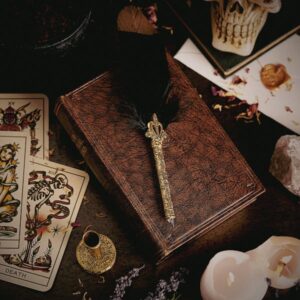
Reading Tarot: A Guide to Interpretation
Interpreting Tarot cards requires both knowledge and intuition. Several factors influence a reading, including the **card’s position, surrounding cards, and the querent’s energy**. The same card can have different meanings based on context.
Upright vs. Reversed Cards
Each Tarot card can be read upright or reversed. An **upright card** signifies direct meanings, while a **reversed card** often indicates delays, inner conflicts, or blocked energy.
Common Tarot Spreads
Different layouts or “spreads” help readers organize the cards and extract deeper meaning. Some popular Tarot spreads include:
- The Three-Card Spread: Represents past, present, and future.
- The Celtic Cross Spread: A ten-card spread offering deep insight into a situation.
- The Horseshoe Spread: Useful for examining different outcomes and influences.
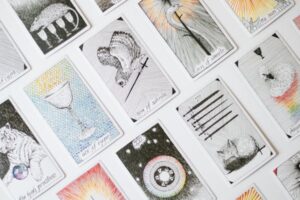
Conclusion
The Tarot is a profound tool for self-discovery and guidance. Understanding the **Major and Minor Arcana** allows readers to unlock the wisdom contained within the deck. Whether used for personal reflection or professional readings, the Tarot offers limitless insight into the human experience.
Bibliography
- Pollack, Rachel. Seventy-Eight Degrees of Wisdom. Weiser Books, 2019. ISBN: 9781578636655.
- Greer, Mary K. Tarot for Your Self. Weiser Books, 2002. ISBN: 9781578631360.
- Kaplan, Stuart. The Encyclopedia of Tarot. U.S. Games Systems, 1978. ISBN: 9780913866064.
- https://en.wikipedia.org/wiki/Tarot



